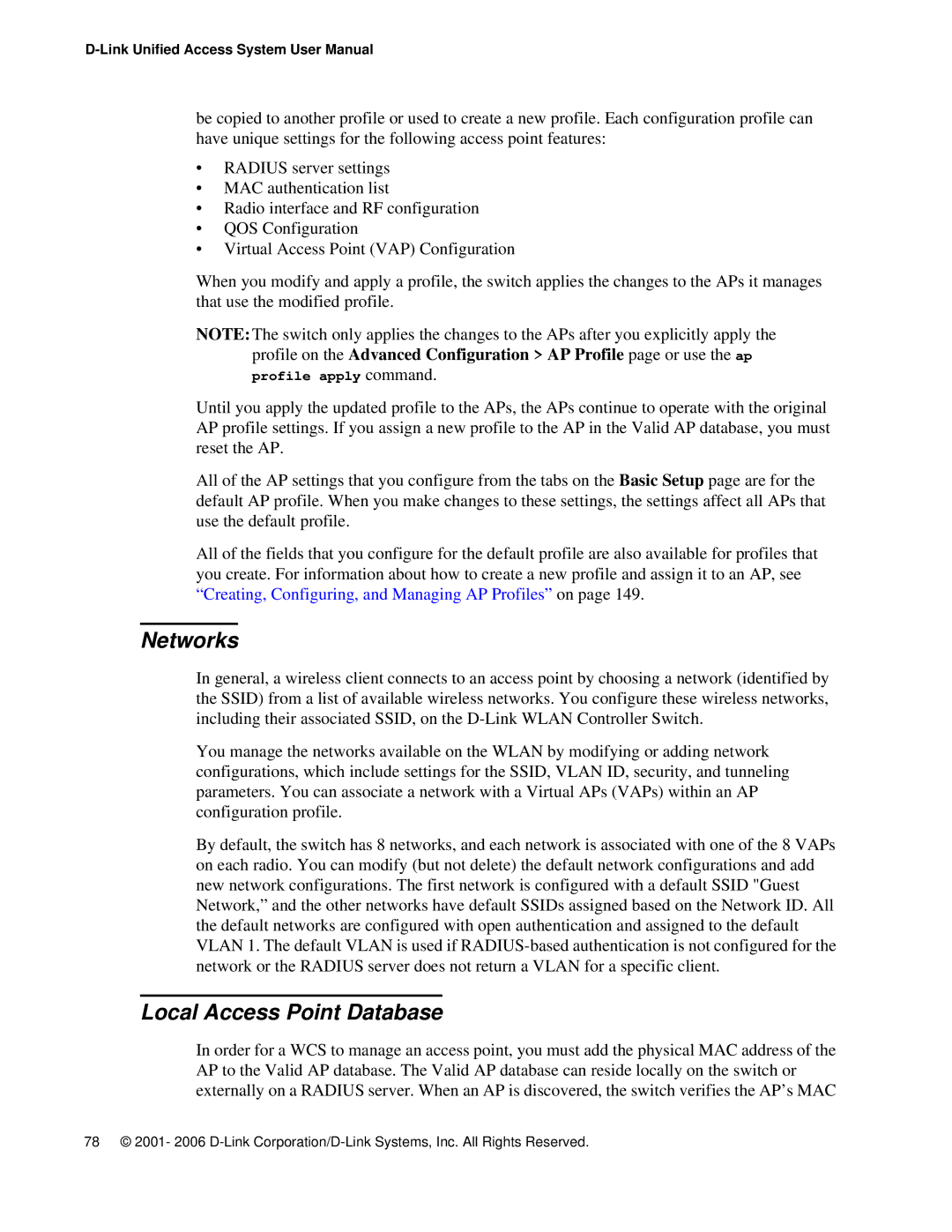
be copied to another profile or used to create a new profile. Each configuration profile can have unique settings for the following access point features:
•RADIUS server settings
•MAC authentication list
•Radio interface and RF configuration
•QOS Configuration
•Virtual Access Point (VAP) Configuration
When you modify and apply a profile, the switch applies the changes to the APs it manages that use the modified profile.
NOTE:The switch only applies the changes to the APs after you explicitly apply the profile on the Advanced Configuration > AP Profile page or use the ap profile apply command.
Until you apply the updated profile to the APs, the APs continue to operate with the original AP profile settings. If you assign a new profile to the AP in the Valid AP database, you must reset the AP.
All of the AP settings that you configure from the tabs on the Basic Setup page are for the default AP profile. When you make changes to these settings, the settings affect all APs that use the default profile.
All of the fields that you configure for the default profile are also available for profiles that you create. For information about how to create a new profile and assign it to an AP, see “Creating, Configuring, and Managing AP Profiles” on page 149.
Networks
In general, a wireless client connects to an access point by choosing a network (identified by the SSID) from a list of available wireless networks. You configure these wireless networks, including their associated SSID, on the
You manage the networks available on the WLAN by modifying or adding network configurations, which include settings for the SSID, VLAN ID, security, and tunneling parameters. You can associate a network with a Virtual APs (VAPs) within an AP configuration profile.
By default, the switch has 8 networks, and each network is associated with one of the 8 VAPs on each radio. You can modify (but not delete) the default network configurations and add new network configurations. The first network is configured with a default SSID "Guest Network,” and the other networks have default SSIDs assigned based on the Network ID. All the default networks are configured with open authentication and assigned to the default VLAN 1. The default VLAN is used if
Local Access Point Database
In order for a WCS to manage an access point, you must add the physical MAC address of the AP to the Valid AP database. The Valid AP database can reside locally on the switch or externally on a RADIUS server. When an AP is discovered, the switch verifies the AP’s MAC
78 © 2001- 2006
